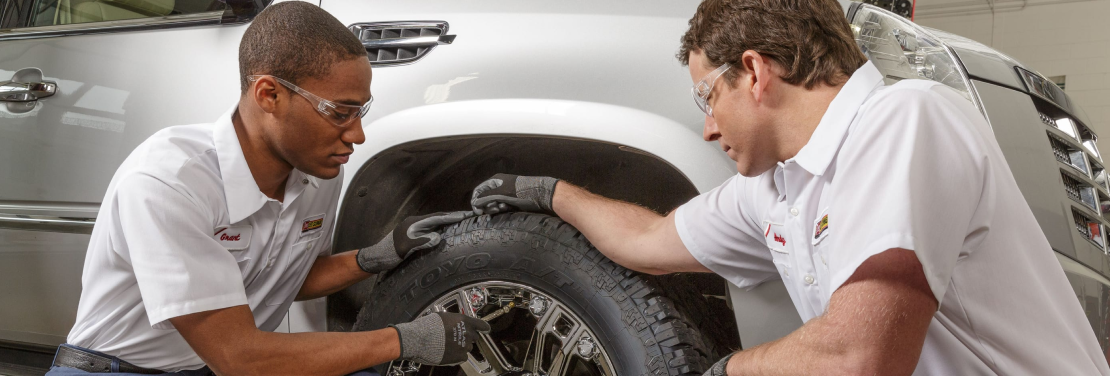Expert Morris Tire and Alignment: Improve Your Automobile's Performance
Tire Solution: The Impact of Climate Conditions
When it involves making sure ideal performance and safety and security when driving, recognizing the impact of climate condition on tire service is vital. From scorching heat to icy roads, each weather condition component can considerably influence tire capability and total driving experience. By diving into the effects of varying weather on tires, chauffeurs can get beneficial insights that may boost their vehicle's performance and durability. In this discussion, we will certainly explore the elaborate connection in between weather and tire solution, losing light on the importance of weather-specific tire maintenance practices and considerations.
Warmth and Tire Performance
When exposed to heats, tires experience adjustments in efficiency that can dramatically affect automobile security and handling. The heat created from long term driving or warm climate problems triggers the tire rubber to soften, causing minimized walk life and enhanced wear. As the rubber becomes softer, the tire's grasp on the roadway reduces, impacting braking ranges and general grip. In extreme instances, extreme heat can also cause tire blowouts, positioning a serious safety and security danger to the car and its occupants.
Furthermore, high temperature levels can speed up the procedure of tire aging, causing the rubber to wear away much more swiftly. To minimize the results of heat on tire performance, motorists need to routinely inspect their tire stress, turn tires to ensure even wear, and examine for any type of indications of damage.
Winter Effects
Cold weather condition problems can have a considerable influence on tire efficiency and safety and security. As temperature levels decline, tire rubber can set, bring about decreased traction on icy or snow-covered roadways. In cool climate, tires might also shed atmospheric pressure a lot more quickly, which can impact taking care of and gas performance. Furthermore, chilly temperatures can trigger tire sidewalls to tense, raising the threat of damage from holes or other roadway dangers.
To minimize the impacts of cold weather on tires, it is crucial to regularly examine tire pressure and inflate them to the supplier's suggested levels. Making use of winter season or all-season tires made for winter conditions can likewise improve grip and hold on icy or snowy roads - morris tire and alignment. Proper tire upkeep, including normal assessments for wear and damages, ends up being much more essential throughout colder months to make sure optimal efficiency and safety
Rainy Issues Influence
During rainy problems, tire efficiency and safety and security can be significantly influenced by the wet road surfaces and reduced visibility. The walk pattern of tires plays a critical duty in keeping traction on wet roadways. Tires with worn-out treads are more vulnerable to hydroplaning, where a layer of water develops between the roadway and the tire surface, resulting in loss of traction. To fight this, vehicle drivers must consistently check their tires for appropriate tread depth and consider investing in tires especially developed for damp conditions.

Snow and Tire Safety And Security
Snow-covered roadways position one-of-a-kind difficulties for vehicle drivers, emphasizing the relevance of proper tire option and maintenance. When driving in snowy problems, having the best tires can make a substantial difference in safety and security and performance. Wintertime tires are designed with unique rubber compounds and step patterns to provide much better grip on snow and ice contrasted to all-season tires. The deeper treads and sipes of winter months tires help grasp the road much better, decreasing the risk of slipping and gliding.
Along with making use of winter season tires, it is crucial to ensure they are appropriately blown up. Winter can cause tire pressure to drop, affecting traction and handling (tires morris il). Routinely checking and maintaining the appropriate tire pressure is important for optimal performance in sites snowy problems

Weather-Related Tire Upkeep
When encountered with numerous weather, proper tire upkeep comes to be a vital facet of car safety and security and performance. Weather-related tire upkeep incorporates a variety of methods targeted at making sure optimum tire function and longevity in different climate scenarios. One essential facet of weather-related tire look at these guys maintenance is tire stress policy. Rising and fall temperatures can cause tire stress to differ, impacting traction and gas performance. Frequently adjusting and inspecting tire stress according to supplier recommendations is vital for secure driving in transforming climate condition. Furthermore, tire walk deepness plays a substantial duty in handling different weather aspects. Tires with appropriate walk depth give better grip on wet or icy roads, reducing the threat of skidding or hydroplaning. Evaluating tire step regularly and replacing tires when step wear gets to a particular deepness is crucial for maintaining grip and stability in unfavorable weather condition. By focusing on weather-related tire maintenance, vehicle drivers can improve safety and security, boost vehicle efficiency, and prolong the lifespan of their tires.
Verdict
Finally, climate condition have a significant influence on tire performance and safety and security. From warm affecting tire stress and wear to winter lowering traction, it is important to think about the climate when keeping and using tires. Stormy conditions can decrease hold and bring go to these guys about hydroplaning, while snow can enhance the threat of accidents if tires are not properly outfitted. Weather-related tire maintenance is vital in ensuring ideal efficiency and safety and security when driving.
In this discussion, we will certainly discover the intricate relationship between weather condition problems and tire solution, losing light on the importance of weather-specific tire maintenance techniques and considerations.
